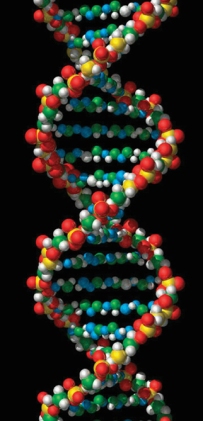A number of burglars are unable to resist the temptation to snack on a piece of fruit or chocolate whilst relieving the householders of their more valuable worldly goods.
But rather than taking their apple cores home or eating a whole chocolate bar, many burglars will discard the remains of their snack at the scene - and leave behind valuable forensic evidence in the form of teeth marks.
In Adelaide, a burglary took place in an up-market chocolate factory. The burglar sampled a few of the products but left the half-eaten bars at the scene. A forensic odontologist was able to match the teeth marks in the partially-eaten chocolate bars with dental impressions taken from a suspect.
A quick online search will find many other, similar, examples.
A quick online search will find many other, similar, examples.
In general, food is overlooked as a source of forensic evidence. However, a perpetrator may handle a piece of food at a crime scene, even if he/she does not eat it. Consequently, the potential exists for an apple or an orange, for example, to yield fingerprint evidence.
An item of food may have a porous or non-porous surface, which may be smooth or rough, but it is unlikely to be completely uniform across its surface. This makes it difficult to choose the best technique for developing fingerprints.
Some techniques are designed specifically to recover fingerprints from porous surfaces, whereas others are designed for non-porous surfaces. Using the wrong technique may damage the fingerprint and the evidence will be lost.
Until recently, fingerprints had only been recovered from food by scientists from Slovenia and India. Scientists in the UK were, naturally, interested in these results. However, the chemicals that were used in the Indian and Slovenian studies are not used to recover fingerprints in the UK.
Scientists at Abertay University in Scotland set out to discover whether they, too, could recover fingerprint evidence from food, but without using the chemicals in the Indian and Slovenian studies.
They started out using conventional UK chemical techniques, but, as expected, the results were disappointing.
They then turned to Powder Suspension, a thick, tar-like substance that is used to recover fingerprints from the sticky side of adhesive tape.
Here is a video showing how fingerprints can be developed on the sticky sides of duct tape, masking tape and electrical tape.
By modifying the consistency of Powder Suspension and making it more dilute, the Abertay researchers obtained identifiable prints on smooth-skinned fruit and vegetables, including bananas, apples and onions.
The technique was less successful on potatoes, which are rough-skinned, and eggs, which are porous.
Much more research will need to be carried out before this technique can be used operationally on food at crime scenes. But, it should give potential burglars something to ponder. Food for thought, you might say............
Do leave a link to your book/story in the Comments section. I'd love to read your work.
An item of food may have a porous or non-porous surface, which may be smooth or rough, but it is unlikely to be completely uniform across its surface. This makes it difficult to choose the best technique for developing fingerprints.
Some techniques are designed specifically to recover fingerprints from porous surfaces, whereas others are designed for non-porous surfaces. Using the wrong technique may damage the fingerprint and the evidence will be lost.
Until recently, fingerprints had only been recovered from food by scientists from Slovenia and India. Scientists in the UK were, naturally, interested in these results. However, the chemicals that were used in the Indian and Slovenian studies are not used to recover fingerprints in the UK.
Scientists at Abertay University in Scotland set out to discover whether they, too, could recover fingerprint evidence from food, but without using the chemicals in the Indian and Slovenian studies.
They started out using conventional UK chemical techniques, but, as expected, the results were disappointing.
They then turned to Powder Suspension, a thick, tar-like substance that is used to recover fingerprints from the sticky side of adhesive tape.
Here is a video showing how fingerprints can be developed on the sticky sides of duct tape, masking tape and electrical tape.
By modifying the consistency of Powder Suspension and making it more dilute, the Abertay researchers obtained identifiable prints on smooth-skinned fruit and vegetables, including bananas, apples and onions.
The technique was less successful on potatoes, which are rough-skinned, and eggs, which are porous.
Much more research will need to be carried out before this technique can be used operationally on food at crime scenes. But, it should give potential burglars something to ponder. Food for thought, you might say............
Do leave a link to your book/story in the Comments section. I'd love to read your work.

